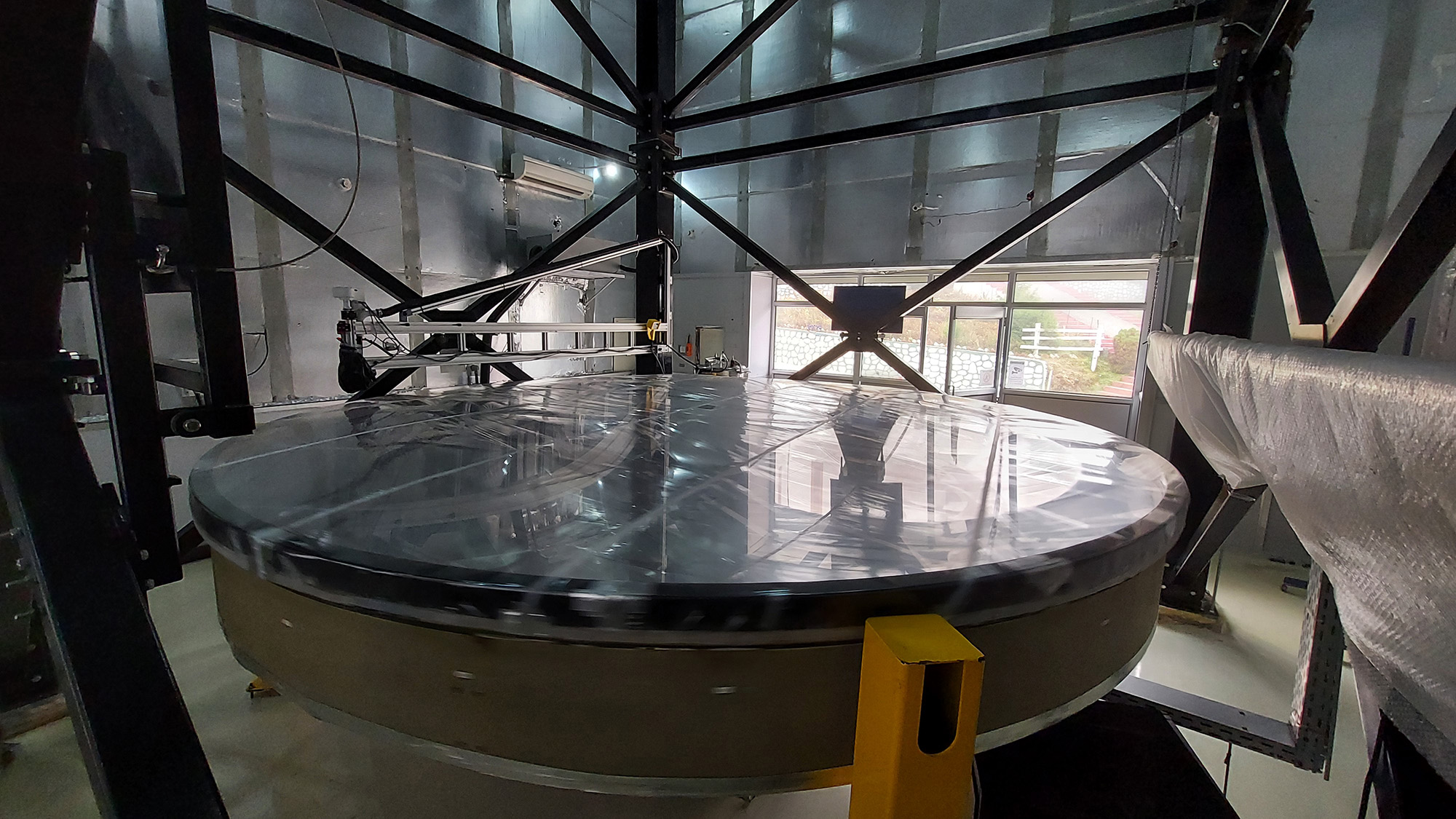

It’s pretty easy to imagine carving glass to make parts for a piece of technology. We see them everyday–in eyeglasses, in microscopes in high school chemistry classes, and even in most telescopes. But astronomers have done something a bit different. They’ve made a telescope with a far weirder component: liquid mercury.
The International Liquid Mirror Telescope (ILMT), situated atop a mountain in the Himalayas, has a spinning vat of liquid mercury as its mirror. This international project—a collaboration between India, Belgium, Poland, Uzbekistan, and Canada—recently successfully observed its first supernova, illustrating that these fluid marvels can be used for modern astronomy. Their results are available on the pre-print server arXiv, and published in the Bulletin of the Liège Royal Society of Sciences.
“The ILMT is the first liquid mirror telescope designed specifically for astronomy and located at a good astronomical site,” explains Paul Hickson, co-author on the new work and astronomer at The University of British Columbia. In the past, NASA has used small liquid mirror telescopes (LMTs) to keep tabs on asteroids and other space debris, but these were generally in less desirable locations and smaller in size than the four-meter diameter ILMT.
The major telescopes of astronomy, like the James Webb Space Telescope or the Keck Observatory in Hawai’i, use humongous glass mirrors that have been carefully ground into a perfect parabola, the shape needed to focus light in a reflecting telescope. LMTs work by rotating a liquid—typically mercury—to make a parabola instead. Telescope operators have to keep careful tabs on the rotating fluid, as any tiny disturbances will blur their images.
Because they get around the tricky and time-consuming work of perfecting a glass behemoth, LMTs are often cheaper to make. However, they have one really significant drawback, which can be a dealbreaker for a lot of science cases. These unique telescopes can only point straight up (known as zenith pointing), as any tilting will disturb the spinning fluid with gravity. So unlike conventional telescopes, they can’t simply slew to any target in the sky—they’re fixed in place, and so have to wait for a target to pass overhead.
Having seen the idea of an LMT float around the astronomical community for years, “it is wonderful to see the method fully implemented and producing good science,” comments Ian McLean, an astronomer and experienced instrument builder at University of California, Los Angeles. “However,” he adds, “I would be very surprised if this technology took off and became common in the future unless the demand for zenith pointing telescopes suddenly became essential.”
The ILMT team has a clear plan for their telescope, though, taking advantage of the unique zenith pointing restriction. They’re planning to stare at the same patch night after night, keeping watch for anything interesting like a cosmic watchman. The goal, Hickson explains, is “to observe a large region of sky repeatedly, once each night, in order to detect things that change,” such as stars that flare up or explode entirely in a supernova, or asteroids zooming past in our own solar system. Anything the ILMT spots can then be followed up by traditional observatories, which generally spend their nights chasing down celestial objects and somewhat rarely look at the same exact spot twice in a row.
After the telescope’s debut in 2022, the ILMT recently captured light from an already identified supernova called SN 2023af. This successful detection is “an excellent triumph for the liquid mirror technology telescope team,” adds McLean. The team hopes it’s only the first of many supernovae to come. According to lead author Brajesh Kumar, a researcher at the South-Western Institute For Astronomy Research in China, they expect ILMT “will discover and monitor hundreds of supernovae each year” from here on, hopefully unraveling the details of how stars’ lives come to an end.
